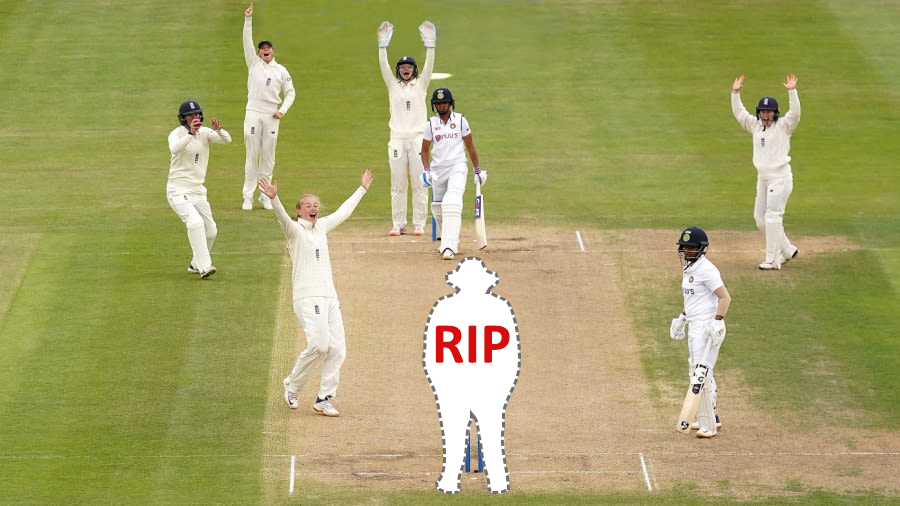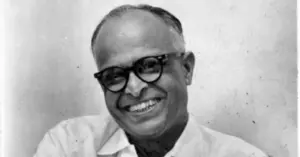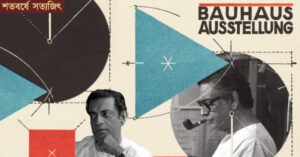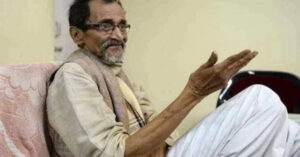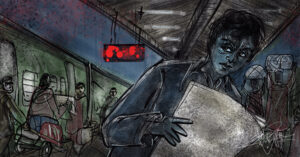Sachin Tendulkar was batting on 11 at Kingsmead, Durban, when he tried to steal a single. He lunged for the crease and it was not clear whether he had made it. The field umpire Cyril Mitchley drew a rectangle in the air with his forefingers, the third umpire looked at replays that showed Tendulkar was out of his crease. The first third umpire decision, aided by slow motion replay, had been made. The year was 1992, P.V. Narasimha Rao was Prime Minister, Ravi Shastri was a lanky all-rounder, Tendulkar was all of 19, and umpires used to decide on all matters ranging from run-outs to whether it was time for the drinks break. True, it is hard to imagine that there was such a time. Thirty years later, the umpire can safely be added to the list of endangered species, or in keeping with the spirit of Sharad, let us say that their immersion is imminent.
The DRS (Decision Review System) was instituted almost 20 years after the Kingsmead run-out. Through those years, the sense in using technology to minimise error became increasingly evident. A phase of discomfort with the technology existed in the early 2010s for a few years, where teams participating in a bilateral series could opt out of the DRS system. This stemmed from India’s ex-captain MS Dhoni’s rather unreasonable scepticism that the ball-tracking systems in place to decide on LBWs did not adhere to logic or geometry theorems. When Virat Kohli took over, the technology was deemed mandatory across all teams.
Many umpires who were at the peak of their careers when technology crept up on the game, felt less than comfortable. One of the best umpires of his generation, Simon Taufel recalls: “I felt slightly disappointed that technology was deskilling me a little. I had training, I had honed my decision-making skills, and progressed up the professional pathway (just like a player does) only to have these skills and performance areas diluted.”
If technology is the primary reason for the demise of the umpire, rather curiously, it is the generally peaceful conduct of cricketers that might drive the final nail into his coffin. Cricket is gentlemanly, ladylike and civilised unlike, say, football. After all, as long as Luis Suarez has teeth and Zinedine Zidane has a head, a mediator is required on the football field. Contact sport can often turn into conflict, making the figure of the referee as much of a school monitor, as arbiter on whether a goal was a goal or an offside was really one. The referee will continue to preside over sports ranging from hockey (particularly the volatile ice hockey) to football to basketball, where tempers can flare unexpectedly.
The worst that can happen on a cricket field is Virat Kohli mispronouncing Ben Stokes (too many videos to choose just one), or Kieron Pollard throwing his bat in the general direction of Mitchell Starc (https://www.youtube.com/watch?v=YwMuLyW6xM0 ).
Crucially, the football and hockey officials are weaponised with yellow and red cards, which can affect the course of a match. The worst an umpire can do is give a report to the match referee.
The only sports official who is in a predicament similar to the cricket umpire is the tennis umpire. With opponents as far apart as possible, and technology like cyclops guarding the lines, he or she does not really have to be present. That said, the tennis umpire can dock points and censure bad behaviour, unlike the cricket umpire.
If there is any case for the umpire, it is as a guardian of the game’s moral core. Indian batting star Gautam Gambhir says, “While technology will help us in arriving at more accurate decisions, what happens to the ‘Spirit of Cricket’? It is a very, very wide and a grey area that needs human interpretation.”
Umpires add the human touch, the fallibility of on-the-spot decision to a game of cricket. Like all figures of authorities, part of the drama is in questioning them and showing displeasure in discreet yet telling ways. They will exist in the maidans, schoolgrounds, clubs and other nurseries of cricket where technology will remain inaccessible even after they disappear from international cricket matches.
There is also the problem of immobility. Cricket umpires are static men. The camera can travel down the pitch with the ball, sail to the boundary with a top edge and follow fielders as they bounce over and back into the field. The umpires, even two of them, cannot be as omnipresent as the slew of cameras that cover an international match. They are rooted to the spot and unlike football referees, cannot run alongside the ball, shadowing the forwards and marking the markers. Sure, VAR (Video Assistant Referee) is increasing used, but it is eventually only an assistant, and can never replace the eyes and legs of a football referee.
The reasons are manifold and the end is near, but what did the umpire bring to the game? What were the tricks in his baggy coat that made him such an integral part of the game? Cricketers, for all their appealing and glares at the umpires, are the first to claim to be worried about their growing irrelevance.
Michael Holding, one of the greatest pace bowlers of the game who then became one of the most revered commentators, was in fact given his sobriquet ‘Whispering Death’ by the legendary umpire Dickie Bird. He says: “I would hope sporting officials will not disappear from sporting arenas, but to be honest, the way things are headed, I would not rule it out. I would prefer technology to aid humans and not to replace them.”
Many friendships, too, blossom between umpires and players. Simon Taufel and Rahul Dravid had immense respect and fondness for each other. Holding still keeps in touch with Bird, now an octogenarian settled in Leeds. “I saw him every year, when we travelled to Leeds for cricket at Headingly. I have continued this practice over the last three decades, and only broke it these past two years because of Covid and the bubble that we move in.” Many cricketers become umpires, which adds to the feeling of kinship.
Fans remember fondly quirkier umpires like David Shepherd, who hopped around when teams or batsmen reached 111 and the Kiwi king of quirk Billy Bowden who would send batsmen off with his crooked finger. Supporters also loved to hate a few umpires, none more so for Indian fans than Steve Bucknor, aka, Slow Death. Many in India still swear that at least half a dozen Sachin Tendulkar centuries were snuffed out by the poor decisions of Bucknor. And they have also been locked in controversies occasionally. Mike Gatting and Pakistan’s Shakoor Rana’s altercation, and Darrel Hair’s atrocious attitude towards Sri Lanka, particularly Muttiah Muralitharan, are some of the uglier umpiring incidents on a cricket field. What’s more, all umpires in India-Pakistan matches were considered horribly biased, and that is how Imran Khan floated the idea of neutral umpires in the mid-1980s.
Clearly, umpires add the human touch, the fallibility of on-the-spot decision to a game of cricket. Like all figures of authorities, part of the drama is in questioning them and showing displeasure in discreet yet telling ways. They will exist in the maidans, schoolgrounds, clubs and other nurseries of cricket where technology will remain inaccessible even after they disappear from international cricket matches.
My favourite memory of an umpire is during a break at a cricket match I saw a part of, between college students, at an idyllic cricket ground in Trinity College, Dublin. The umpire, who was slightly older but by no means old, was giving a rubdown to a player. Next to him lay his white coat and floppy hat, a little boy began delving into the pockets of the coat to see what was there. It was a scene from another time, and the umpire fitted in perfectly.
